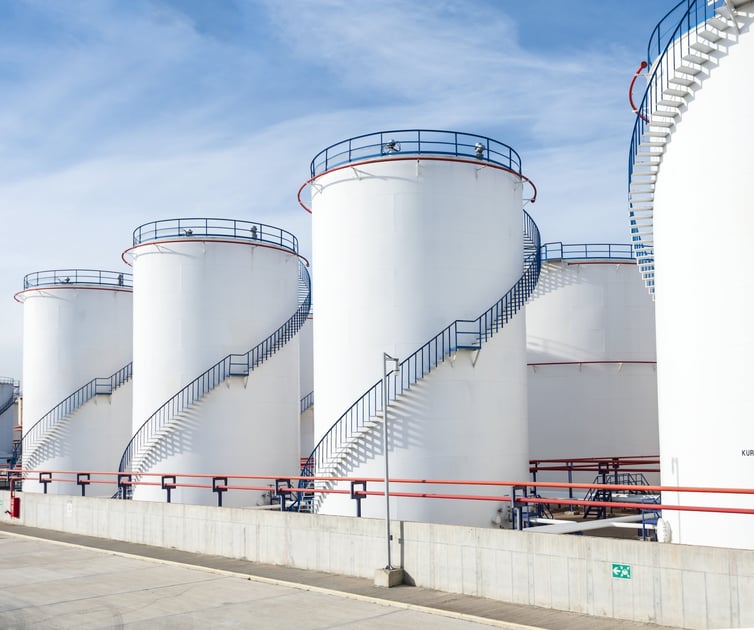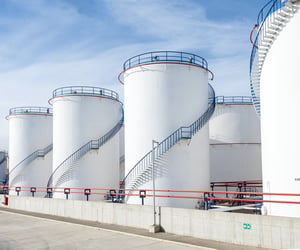Fuel biocides: Counting the costs vs. the benefits
Business decisions are all about counting costs vs. benefits. Microbes in fuels and other industrial liquids have the potential to cause big...

Adherence to best practices is a key element to ensuring that stored fuel stays in optimal condition for as long as possible. It involves things that personnel in the industry may never have known they should be paying attention to. Fuel testing and monitoring, the right chemical treatments, the right mechanical fuel processing and cleaning at the right time. It’s a lot to take into account. For many in the industry, it’s just another thing they have to pay attention to.
 While fuel storage best practices is too broad of a topic to completely cover in just one blog post, there are some aspects of it that we can touch on that may be valuable to keep in mind.
While fuel storage best practices is too broad of a topic to completely cover in just one blog post, there are some aspects of it that we can touch on that may be valuable to keep in mind.
Monitoring of stored fuel condition doesn’t have to take an act of congress. Yet, many entities (at least, the ones that aren’t pushed by regulations to do things) don’t monitor the condition of their stored fuel on a regular basis. Stored fuel becomes out-of-site out-of-mind. You would not believe the number of fuel storage tanks scattered across the Fruited Plain that have diesel fuel in them that even pre-dates the ULSD requirements of 2006. Many of those owners have no idea if the fuel inside is even viable (or to what extent).
Regular monitoring of stored fuel is a key best practice pillar for fuel storage. It can be as simple as drawing a fuel sample from a storage tank once a month. There are more involved things you can do, but even just drawing a sample and examining it visually is a lot better than not doing anything and hoping for the best when the time for use comes.
This is a whole new ballgame that the industry is just now coming around on. People know more now to watch out for the signs of microbial presence in storage tanks. Historically, these have been some combination of free water presence at the bottom of the tank, a change in the fuel’s physical characteristics, and a change in the frequency of filter plugging.
All of those are important to watch out for, but they’re all inferential or “circumstantial”. Those things are associated with microbes in fuel, but they don’t prove for sure that microbes are there, or that they are there to a problematic level. This last thing is an important consideration. Microbes are everywhere. Seriously, we can’t really even understand the number of microbes that are all around us. There’s virtually no place they don’t exist. So there’s a difference between simply having “microbial presence” in a fuel storage tank and that microbial presence being high enough to cause problem.
The hurdle for diagnosing or measuring microbial presence in fuel has always been the available technology. It was expensive (sometimes over $100 for a single test), it took too long to be useful and it didn’t tell you the best information you needed to know.
Common indicator tests, like dip slides or paddle slides, are a good example of the limitations that bound the industry. They would take 3-5 days to give you an answer, and the answer was some version is Yes or No. These answers aren’t as useful as they need to be – Yes is a fine answer, but what’s really important is “how much”? And 3-5 days is too long for the answer to be that useful – things can change markedly in a storage tank in that period.
Thankfully, technology has changed for the best on this. We now have access to next-generation ATP tests that can give an answer in just 5-10 minutes instead of 3-5 days or longer. And you get more than just a Yes or No answer, you get an actual count of the number of microbial colony-forming units in a fuel sample.
This information is invaluable to stored fuel users, especially those that already undertake the best practice of monitoring the condition of their fuel. They can do a microbe test on every storage tank they have and get a picture of conditions within the tank that allow them to make the best decisions possible on what to do, instead of relying on generalizations that may not best reflect what’s going on in the specific tank itself. Not all storage tanks are the same; next-generation ATP monitoring and testing now allows the industry to make the right decisions for their situation, not someone else’s.
Business decisions are all about counting costs vs. benefits. Microbes in fuels and other industrial liquids have the potential to cause big...

As the business landscape of the nation changes in 2020, we’re finding that we have to change the way we do a few things. For one, paying attention...
1 min read
Anyone who stores or distributes fuel, including your local gas station, has “issues” with controlling and preventing the growth of bacteria and...